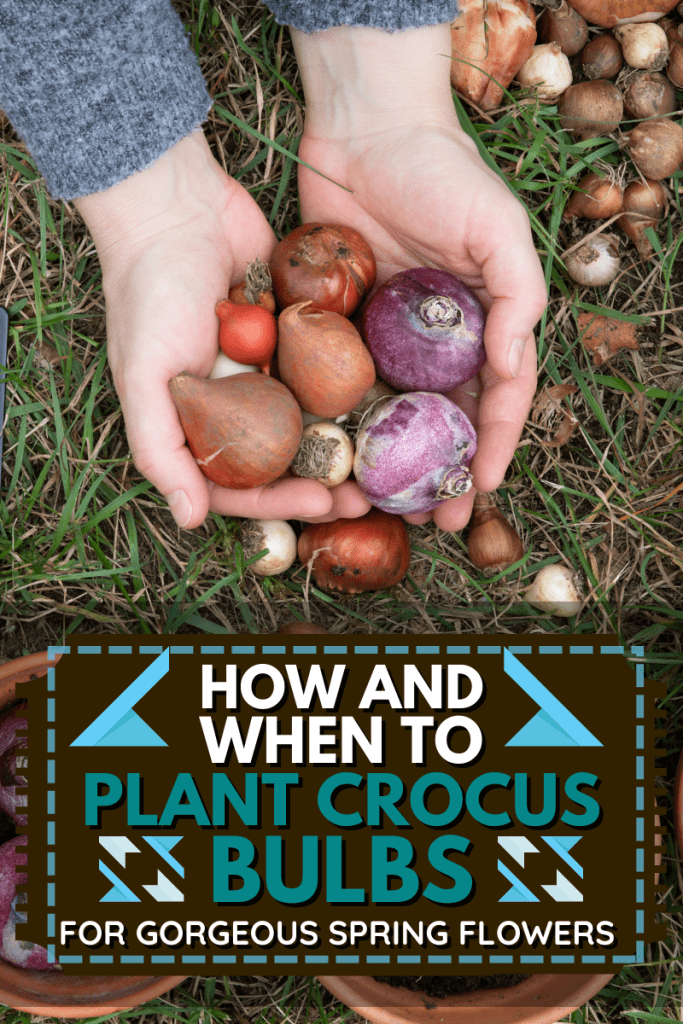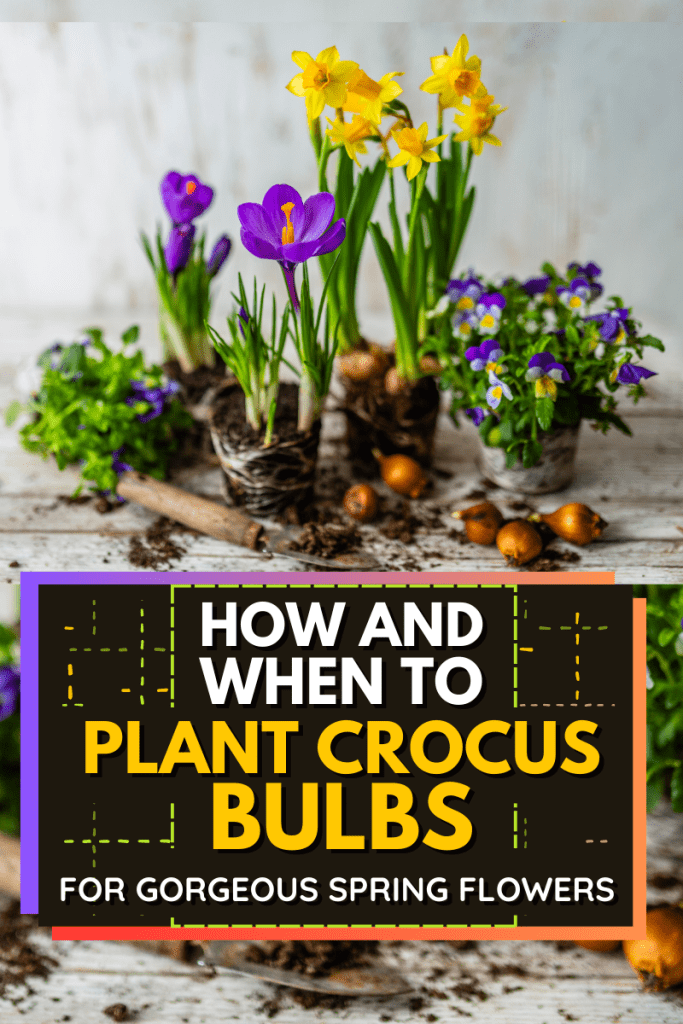If you're looking to add some vibrant color to your garden in the spring, the crocus is a perfect choice.
This stunning flower is easy to grow and comes in a wide range of colors, making it the perfect addition to any garden.
When is the best time to plant crocus bulbs? And how do you plant them?
Read on to learn the answers to these and other questions. We'll provide you with all the information you need to enjoy a breathtaking display of these gorgeous flowers in your garden.
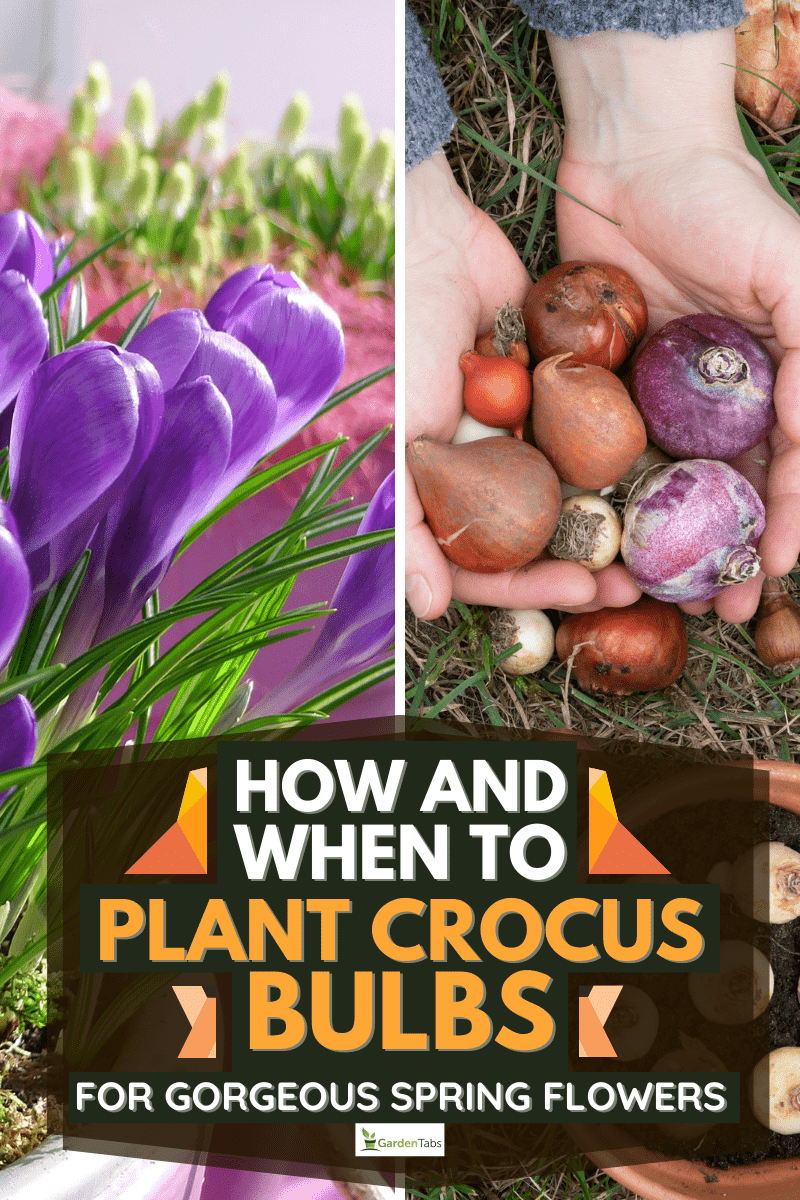
How and When To Plant Crocus
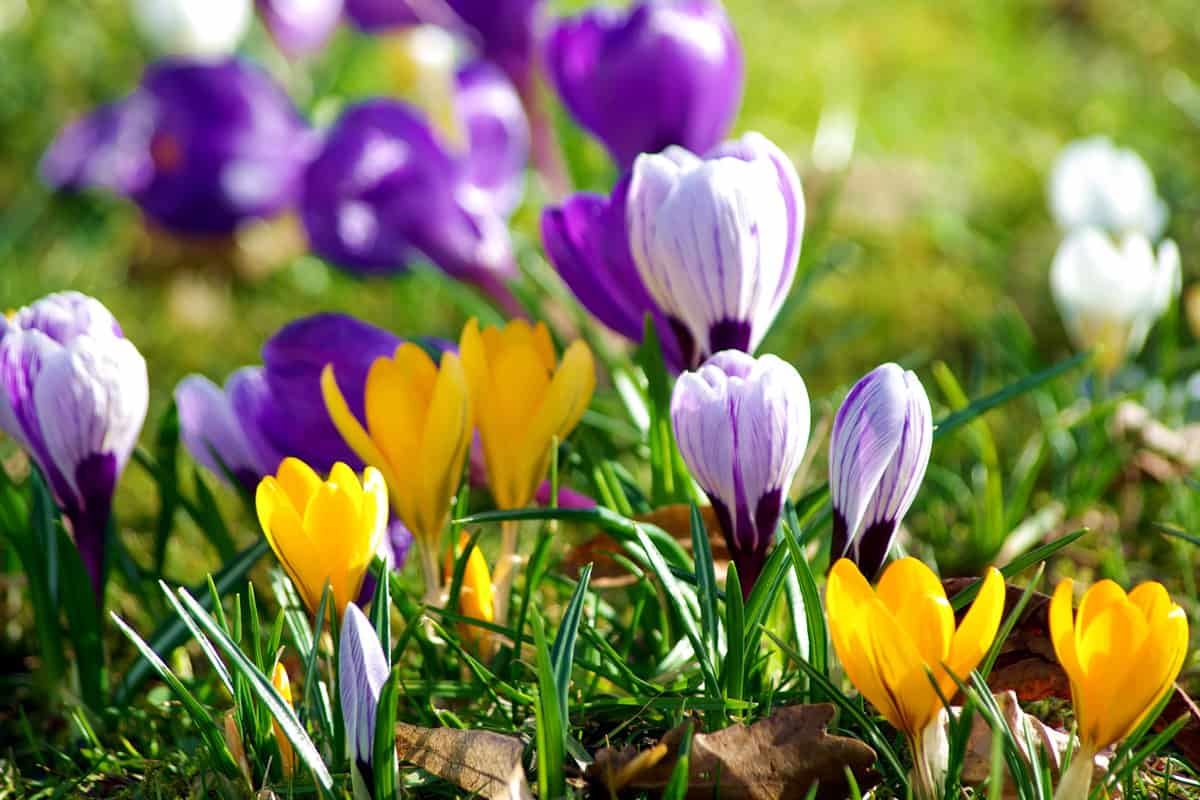
Whether you're a seasoned gardener or a beginner, planting crocus bulbs is a simple and rewarding task.
But to get the most out of your crocus bulbs, it's important to plant them at the right time and in the right way.
When to Plant Crocus Bulbs
Fall is the ideal time for planting crocus bulbs. You should plant them six to eight weeks before the first frost.
This period will give the bulbs enough time to establish roots before the ground freezes.
Crocus bulbs are known for their ability to bloom early in the spring, providing a much-needed burst of color after winter.
These hardy bulbs can survive even the coldest winters and will reward you with beautiful blooms year after year.
What Is the Best Month for Planting Crocus?
The best months for planting are September and October.
It's important to note that the exact timing may vary depending on your location and climate.
If you live in a warmer climate, you may be able to plant crocus bulbs later in the fall or even in early winter.
On the other hand, if you live in a colder climate with harsh winters, you may need to plant the bulbs earlier in the fall.
What Is the Best Climate for Growing Crocus?
Crocus bulbs grow well in areas with cold winters and mild summers. They prefer well-drained soil and can tolerate both full sun and partial shade.
When planting crocus bulbs, choose a location that receives plenty of sunlight.
If you live in a warmer climate, you should plant the bulbs in a spot that gets morning sun and afternoon shade to prevent overheating.
Where Is the Best Place to Plant Crocus Bulbs?

Choose a planting site that is protected from strong winds. Avoid planting in areas with standing water or heavy clay soil, to keep the bulbs from rotting.
If you live in an area where the soil is a heavy clay consistency, don't worry. This article will show you what to do: How To Amend Clay Soil For Bulbs?
When planting, make sure to space the bulbs about three inches apart and plant them two to three inches deep.
If you're planting the bulbs in a lawn, wait until the grass has stopped growing for the season before planting.
You can also plant crocus bulbs in containers but make sure the containers have drainage holes and are filled with well-draining soil.
The video below will give you an idea of how to plant crocus bulbs in pots.
If you're planting crocus bulbs in a new garden bed, you should amend the soil with organic matter.
In the garden bed, you can incorporate compost or aged manure to improve drainage and fertility.
How to Plant Crocus Bulbs
Planting crocus bulbs is a relatively simple process. Here are the steps to follow:
1. Choose a location
As we mentioned, crocus bulbs need well-draining soil and plenty of sunlight. Select a site in your garden that gets at least six hours of sunlight a day, with soil that drains well.
2. Prepare the soil
Before planting, loosen the soil to a depth of around eight to 10 inches. You can use a garden fork or a tiller to do this. Add compost to the soil to improve its drainage and fertility.
3. Plant the bulbs
Dig a small hole in the soil that's three to four inches deep.
Place the crocus bulb in the hole with the pointed end facing upwards. Space the bulbs three to four inches apart.
4. Cover the bulbs
Once the bulbs are in place, cover them with soil and gently press down to remove any air pockets.
5. Water the bulbs
After planting, water the bulbs thoroughly to help them establish their roots.
6. Mulch the area
To help protect the bulbs from extreme temperatures, you can add a layer of mulch over the planting area. This will also help to retain moisture in the soil.
7. Care for the bulbs
Crocus bulbs don't require a lot of care, but it's important to keep the soil moist during the growing season.
You can also fertilize the bulbs with a balanced fertilizer in the fall and spring to help them grow and bloom.
What Happens to Crocuses After They Bloom?
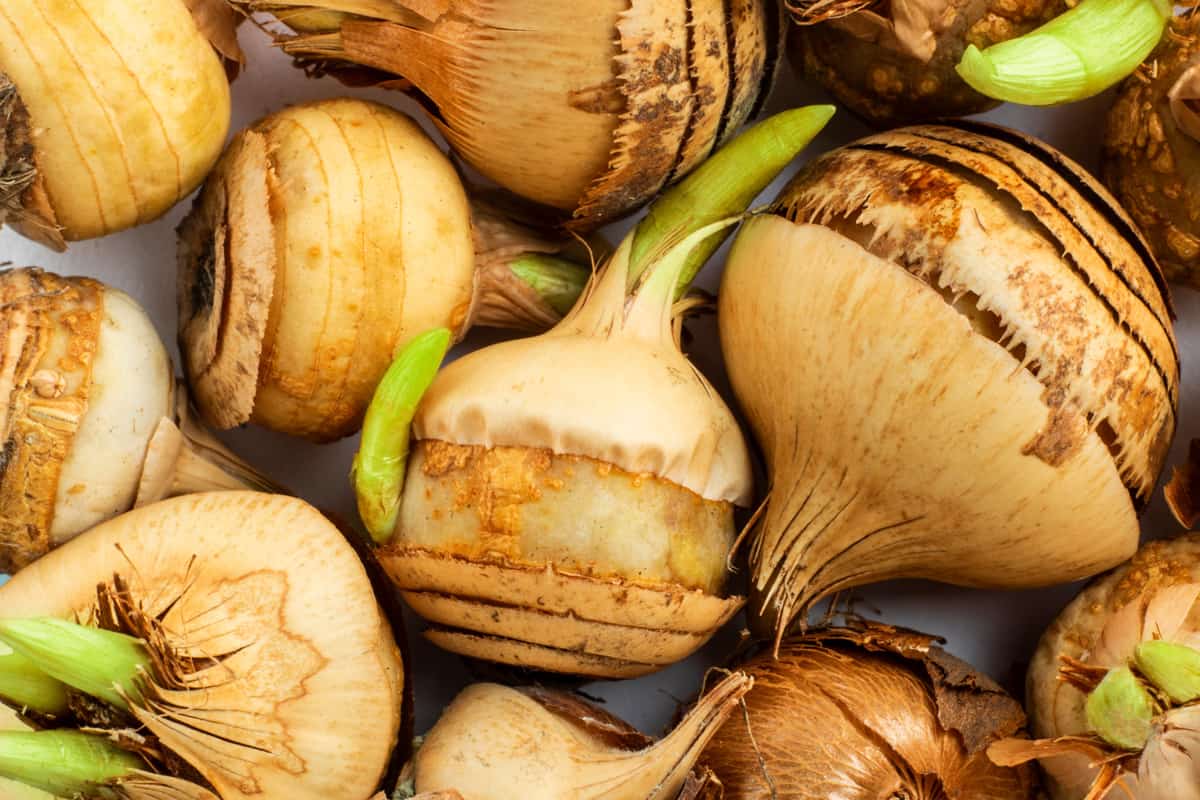
After your crocuses bloom, they will continue to grow and produce nutrients in their bulbs until they enter a period of dormancy.
After the petals of the flowers fall off, the plants will continue to grow and develop.
During this time, the plants will focus their energy on producing and storing nutrients in their bulbs, which they will use to produce flowers again next year.
As the plants die back, the leaves will turn yellow and eventually wither.
This withering is a natural process that allows the plants to conserve energy and prepare for the dormant season.
Once the leaves have withered away, the bulbs will enter a period of dormancy.
During the dormancy period, they will conserve energy until the following growing season.
It's important to avoid watering or fertilizing the plant, as this can disrupt its natural cycle and prevent it from blooming again.
If you want to encourage your crocus bulbs to multiply and spread, you can carefully dig up the bulbs after they have entered dormancy.
Then, separate any offsets, which are small bulbs that grow around the base of the main bulb.
These offsets can be replanted in a new location or stored until the following growing season.
Why Plant Crocus Bulbs?
Crocus bulbs are easy to plant and care for, making them an excellent choice for beginners and experienced gardeners alike.
If it's your first time planting these, you can order your first batch of crocus bulbs online.


Get 40 jumbo crocus mixture bulbs on Amazon.
Here are a few reasons why you should consider planting crocus bulbs in your garden:
- Crocus bulbs are among the first flowers to bloom in the spring, adding a pop of color to your garden after a long winter.
- They are easy to grow and require very little maintenance once planted.
- Crocus bulbs are available in a variety of colors, including purple, yellow, white, and orange, so you can choose the perfect color to complement your garden.
Do Crocus Bulbs Multiply Each Year?

Crocus bulbs are known for their ability to multiply and spread over time, creating a larger and more impressive display of flowers each year.
However, the rate at which crocus bulbs multiply can vary depending on a number of factors.
One of the most important factors that affect bulb multiplication is the quality of the soil.
Poor quality and non-draining soil will make it difficult for the bulbs to multiply.
Another factor that affects bulb multiplication is the amount of sunlight the bulbs receive.
If they are planted in an area with too much shade, they may not multiply as quickly.
Finally, the age of the bulbs can also affect their ability to multiply. As bulbs age, they may become less productive and produce fewer offsets.
In general, crocus bulbs will multiply over time, but to encourage faster bulb multiplication provide them with the proper environment they need to thrive.
Brighten Your Garden with Vibrant Crocus Flowers
Planting crocus bulbs is a simple and enjoyable way to add color and beauty to your garden.
By planting at the right time and providing proper care, you can enjoy a stunning display of crocus flowers in the spring.
Additionally, if you don't have a garden or want to grow crocuses indoors, you can plant them in pots and enjoy their beauty on your patio.
Finally, you can plant crocus together with other flowers such as hyacinth, tulips, daffodils, and forsythia.
Want to learn more about cultivating flowering plants? Read more here: When To Transplant Forsythias [And How To]

